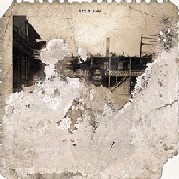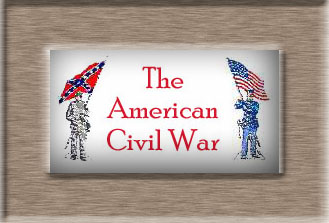


|

YORK RACE RIOT This happened in York, Pennsylvania, a small city where people who lived only a few blocks apart lived in separate worlds -- in what a local newspaper has called "a de facto segregated and discriminatory system supported by city government." William Lee Smallwood, now a city councilman, said, "I remember as a teen-ager being routinely stopped by the cops when they'd see me with a white girl." Black citizens of York had been marching on city hall since 1963, protesting police violence and official discrimination. Their demands for a bi-racial police review board were turned down by the all-white city council. The marchers were frequently clubbed or had German shepherds set on them by police. Whites in York blamed it -- and still blame it -- on "outside people coming in stirring up the neighbors," as one resident recently said. A York College professor put it like this: "It's not simply that people were bigoted. Many whites just didn't see race issues as their problem. Probably most York citizens were in favor of integration, but they saw it as a Southern problem." Not everyone, though. The city had several notorious white gangs -- such as Roosevelt Park Inc., the Newberry Street Boys, the Swampers, and the Girarders -- which the Pa. Crime Commission report called "armed vigilantes." By the mid-'60s, York had become a war zone, divided by race. "What began as bottles and bricks in 1967 escalated into guns in 1968 and armor-piercing bullets by the summer of 1969," according to the York Dispatch, the newspaper which has done wonderful work in documenting the city's recent history (and from which most of the information in this post is drawn). The York race riots began July 17, 1969, after a white gang member shot and wounded a black man. Fights broke out, buildings were set ablaze and police began barricading black neighborhoods. More than 60 people were injured, 100 were arrested and entire city blocks burned. A white rookie police officer was fatally shot while patroling the city in an armored car. No one has ever been identified as the assassin, and the case is still unsolved. On July 20, the day after the killing, York white citizens rallied. One of the police officers who attended was yelling "white power!" He gave bullets for a 30.06 hunting rifle to white gang members and told them to "kill as many niggers as you can." He also told them, "If I weren't a cop, I'd be leading commando raids against niggers in the black neighborhoods." The next night, a cadillac driven by Hattie Dickinson blundered onto Newberry Street. This was the turf of the Newberry Street Boys, and it was the wrong place to be if you were black, in York, and Dickinson was black. She and her family were visiting York from Aiken, S.C. They were out to pick up groceries. Dickinson, was driving her father's car when she saw a person with a gun. She tried to turn around on Newberry Street, near Gay Avenue, at the barricades fronting the railroad tracks. The car stalled. Armed white men poured from the porches. Dickinson panicked. Her parents, in the back seat, started praying. Her older sister, Lillie Belle Allen, 27, jumped out of the car to get to the driver's seat and take the wheel. She waved her arms and yelled, "Don't shoot!" A hail of gunfire cut her down. One of the Newberry Street Boys fired the first shot, and "after that all hell broke loose and it seemed as though everyone started shooting," according to a witness. Up to 20 white shooters at Newberry Street and Gay Avenue opened fire from the street, rooftops, and windows. Allen's body was riddled with "pumpkin balls," buckshot the size of a .38-caliber bullet. The ammunition supplied by the police officer flew along with the rest, though it was not the fatal bullet. Witnesses heard the first shooter later say "we got one," and, "I blew the nigger in half." People who knew about the fatal shootings kept silent, because they were afraid or they didn't want to be seen as traitors. "It was tougher than pulling teeth," said Thomas V. Chatman Jr., who was lead detective on the murder investigations for the York City police. "There were witnesses. But no one wanted to tell you anything. People took sides according to race and didn't want to cooperate." And so for thirty years, the case was cold. Then one of those witnesses finally cracked. Donald Altland, 51, killed himself along the banks of the Susquehanna River on April 11, 2000. Altland left a note on a napkin that read "Forgive Me God," and two cassette tapes reportedly detailing the Allen case, including the admission that he was one of the men who fired on Allen's car. Two months later, the district attorney's office announced it had new leads in the murders. And so while ex-Ku Klux Klansman Thomas Blanton Jr. is being sentenced to life in prison for the 1963 Birmingham church bombing, nine people are being indicted in York and other places for the killing of Lillie Belle Allen. And that police officer, the one who handed out bullets and advised commando raids and shouted "white power"? He's now the mayor of York. Just last month in the primary election he won nomination for another term. In the Democratic Party. Around midnight, a few weekends ago, bright orange stickers were plastered all around downtown York. "Earth's Most Endangered Species: The White Race. Help Preserve It," they read. They were put up by The National Alliance, a neo-Nazi organization based in West Virginia. Dr. William L. Pierce, the leader of the National Alliance, said he has doubled the membership of the alliance to about 2,000 members and 30 chapters in the last few years. He has five alliance chapters in rural Pennsylvania and Maryland, within an easy drive of York. Ann Van Dyke, civil rights investigator for the Pennsylvania Human Relations Commission, said that York "obviously has a long history of distrust" between the races. "But I also emphasize that York County has the highest number of citizens unity coalitions in the state," Van Dyke added. "It deserves credit for being one of the most diligent at reporting hate crimes." National Alliance stickers and pamphlets appear regularly in state trouble spots, Van Dyke said, along with provocations from a wide assortment of other groups seeking to exploit local frustrations over changing demographics and problems with government like prison and highway proposals, and even landfills. The state's high number of waste dumps is an endless source of local fears. "Anywhere you've got change happening and people are scared, you'll find fodder for bigotry, even a dump, for Pete's sake. We've seen messages of 'The Jews are running the dump.' "
|
| �2002Douglas Harper | "When misunderstanding serves others as an advantage, one is helpless to make oneself understood." -Lionel Trilling |